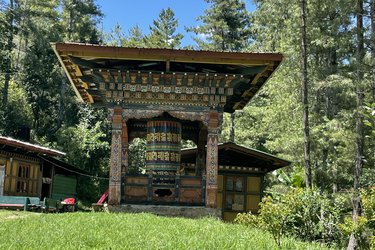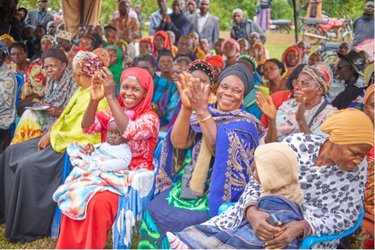

Authors: Lilian Motaroki, Annet Nakyeyune, Tracy Kajumba, Yamikani Idriss and Alfred Okot Okidi
Least Developed Countries (LDCs) are shifting the narrative on climate action by promoting a long-term, country-led planning offer that embeds climate resilience into national and local development goals. The planning offer reflects the LDCs’ commitment to integrate adaptation, mitigation and resilience into their development planning across all levels of government and society. It addresses ongoing challenges that have hindered effective adaptation planning, such as fragmented and short-term interventions, limited and unpredictable access to climate finance, and insufficient technical capabilities at national and subnational levels.
Through LIFE-AR, six Front Runner Countries (FRCs) demonstrate how integrated and inclusive planning across various sectors and governance levels can lead to more coherent and sustainable responses to adapt to climate change.
Integrating climate change adaptation into national planning processes is recognized as essential for achieving sustainable development, in line with global frameworks such as the Paris Agreement and the 2030 Agenda.
Translating these commitments into action remains complex. Many LDCs face persistent barriers to integrating climate change into national planning processes. These include institutional fragmentation, limited technical and financial capacities, and weak coordination mechanisms. As a result, climate adaptation efforts often remain disconnected from core development planning and budgeting cycles.
By promoting long-term, country-led and locally grounded planning, LIFE-AR aims to strengthen national systems, align climate and development goals and ensure adaptation investments are inclusive, risk-informed and responsive to local needs.
"We will integrate adaptation, mitigation and resilience into our national and local development objectives"
LIFE-AR is a long-term initiative with a ten-year planning framework. The initiative begins with an establishment phase that focuses on creating national governance platforms and designing delivery mechanisms to channel climate finance to local levels. The establishment phase for Front Runner Countries (FRCs) took over two years, prolonged by COVID 19 impacts, which is longer than most traditional, investment-focused climate projects. The investment in institutional setup, strengthening systems and capabilities of LDCs, stakeholder engagement and political buy-in is essential for sustainable adaptation planning. It lays a solid foundation for national ownership, leadership, coherent planning, systemic change and sustainable climate action aligned with national development objectives.
In LIFE-AR, six FRCs have finalised the establishment phase and designed their delivery mechanisms that incorporate climate informed planning and tools to identify climate risks and priorities and to enhance integration of climate change at Local Government level. The learnings so far highlight the following:
At the national level, LIFE-AR builds on existing country policies and institutional frameworks that promote integration of climate resilience into development planning. This ensures coordinated tracking and reporting of progress at both global and national levels.
During the Establishment phase, FRCs developed situational analyses to assess their national and subnational contexts and develop country-specific roadmaps for program delivery. These studies documented the status of climate and development policy regimes, their implementation and gaps, while identifying institutional gaps and opportunities to strengthen existing governance systems These studies guided the subsequent activities related to delivery mechanism design, investment prioritisation, system and capability strengthening.
Countries have established whole-of-society (WOS) governance platforms that enhance and complement existing national systems, while supporting inclusive and cross-sectoral planning. This collaboration includes national and sub-national entities responsible for finance and planning, ensuring policy coherence, mainstreaming, institutional ownership, and sustainability. The structures integrate specialized expertise in areas such as Monitoring, Evaluation, and Learning (MEL), Gender Equality and Social Inclusion (GESI), and aspects of developing national Delivery Mechanisms (DM), which are often treated separately in traditional planning processes.
Countries used different approaches, for example, in The Gambia and Uganda, dedicated DM- technical working groups were established to lead the design process while in Malawi the process was led by the national task team, which comprises of Government institutions, academia and civil society, and is chaired by the Leadership for Environment and Development for the Southern and Eastern (LEAD-SEA).
The collaborative approach has embedded transparency, accountability and inclusivity into the architecture of each country’s delivery mechanism while enabling collective reflection, learning and decision making on strengthening planning systems.
The Gambia's Local Working Group
The LoCAL Wroking Group led the effort to align LoCAL (Local Climate Adaptive Living) approach with the LIFE-AR Principles. They identified innovations to improve this alignment and developed a plan for how these innovations would be implemented within the existing planning system. The LoCAL Working Group will oversee the testing of the adapted LoCAL delivery mechanims during the Test and Evolve phase of LIFE-AR.
At the sub-national level, where existing structures have been inadequate or not been operationalised, countries like The Gambia, Burkina Faso and Uganda have improved decentralised governance and promoted community-led participatory planning for adaptation investments. In The Gambia committees have been established in line with the guidelines outlined in the Local Government Act of 2002. In Burkina Faso, LIFE-AR supported the creation of new commune development plans that aligned with the national development priorities and emphasized the integration of climate considerations. These commune development plans serve as the foundation for prioritizing investments. In Malawi, the existing Village Development Committees (VDCs) and Area Development Committees have been revamped ensuring that they actively lead the planning and implementation of the initiative.
LIFE-AR aims to support integrated planning across sectors. All FRC countries’ delivery mechanism (DM) are rooted in their respective planning systems. Malawi's DM leverages the Local Government Development Planning System (DDPS) to channel funds to the local level. By working with the DDPS, LIFE-AR integrates with the public decentralisation architecture and local institutions to support community-prioritised investments for building local resilience.
LIFE-AR countries have supported participatory Climate Risk and Vulnerability Assessments (CRVAs) to inform adaptation investment planning at the local level. CRVAs generate context-specific information on climate risks, exposure and vulnerability. Countries are utilising tools that incorporate gender-sensitive elements into the CRVA process, to prioritise investments that are equitable and responsive to the differential vulnerability of diverse groups such as women, youth, people with disabilities, or those in fragile ecosystems. Those CRVAs provided grounds for communities to make decisions on the type of investments needed to respond to the climate risks and impacts identified. The national and Local Governments supported this process. The integration of the community-led investments in the local development plans has strengthened inclusion of climate change risks in planning and budgeting on the long run.
LIFE-AR builds on existing Government ways of working, tools and systems, or using those already developed if aligned to the principles of LIFE-AR. For example, Uganda has adapted the Pamoja tool used by DCF in Tanzania. which has helped to facilitate inclusive dialogues at community level enabling men, women, young people and persons with disability to articulate their priorities and experiences of climate change to directly inform local development and adaptation planning.

Community consultations in Uganda
LIFE-AR strengthens existing governance structures and integrates delivery mechanisms with clear guidelines, enabling countries to plan contextually and channel at least 70% of climate finance to the local level.
Inclusive platforms and working groups foster cross-sectoral coordination and bring together government, civil society and private actors, embedding transparency, accountability, and social inclusion in planning processes.
Investing in systems and institutional readiness for adaptation is essential but requires properly sequenced efforts and patient support for systems building to mitigate pressure for quick results. Smarter, streamlined support is needed to maintain momentum and ensure timely delivery.
GESI-responsive CRVA tools generate disaggregated, locally grounded data that improves the legitimacy, targeting and impact of climate investments.
A globally coordinated but country-driven model, backed by pooled, flexible funding and a shared MEL framework, enhances coherence, accountability, and cross-country learning while advancing LDC influence in global climate finance. Moreover, the structured ten-year phased approach provides the time and flexibility needed to build institutions, test innovations, and scale what works. Unpredictability of climate finance remains a huge challenge to long-term integrated planning.
LIFE-AR promotes long term, inclusive, risk informed, locally relevant and integrated into national systems planning.
Effective adaptation planning requires investing in institutional and system-wide capabilities; predictable, flexible, and long-term climate finance to enable sustained implementation; and embedding climate risk assessments and gender-responsive tools into planning processes to ensure equitable and effective locally led adaptation. By adopting approaches like LIFE-AR, LDCs can lead the way in building systems that deliver both climate and development outcomes, setting a precedent for global best practice.
While implementing investments and testing their delivery mechnisms, LIFE-AR FRCs will focus on strengthening mainstreaming of climate change into local government planning and budgeting processes.
At the global level, LIFE-AR advocates for programmatic, long-term planning approaches to enable sustainable resilience building.